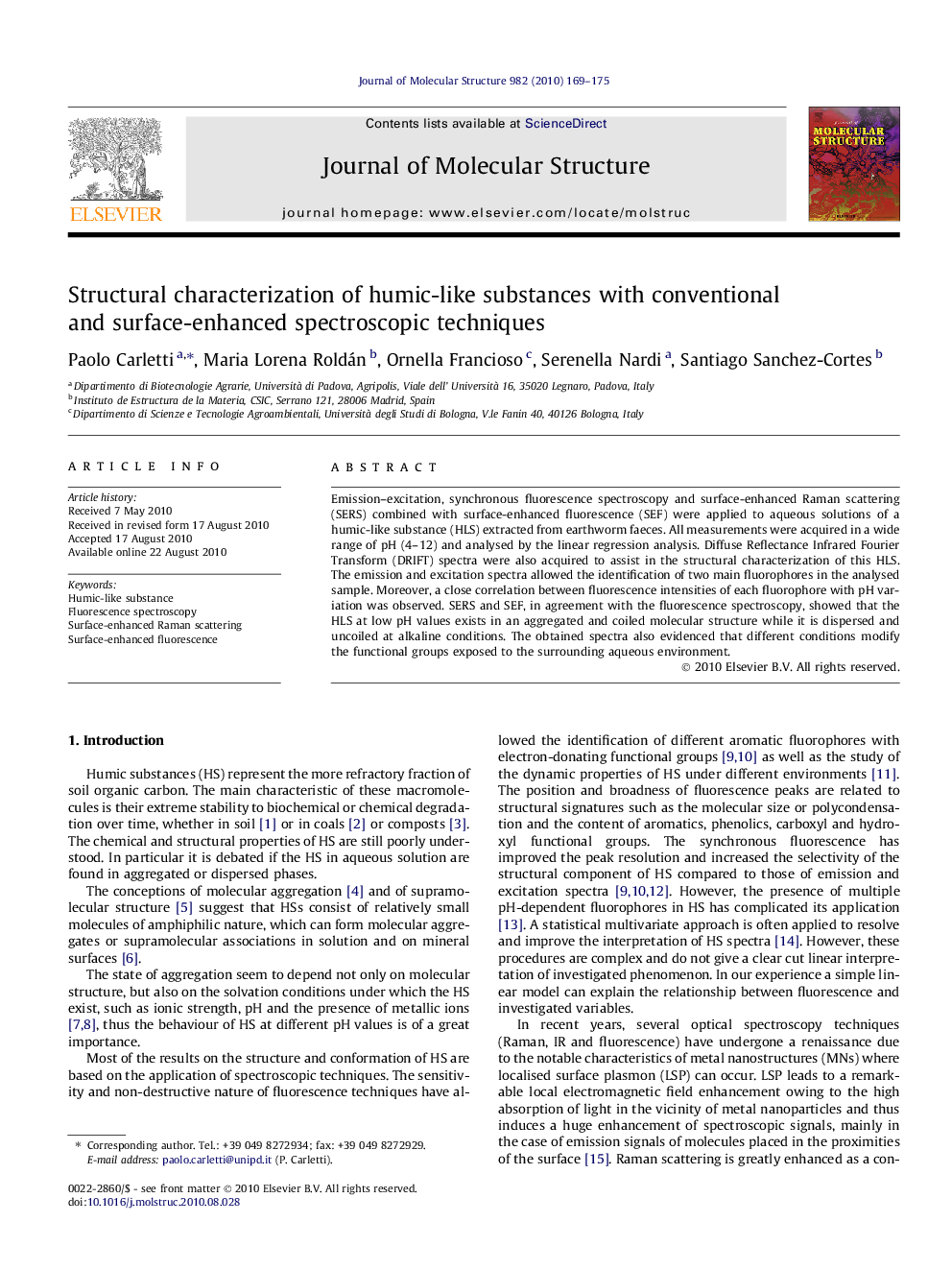| Article ID | Journal | Published Year | Pages | File Type |
|---|---|---|---|---|
| 1406604 | Journal of Molecular Structure | 2010 | 7 Pages |
Emission–excitation, synchronous fluorescence spectroscopy and surface-enhanced Raman scattering (SERS) combined with surface-enhanced fluorescence (SEF) were applied to aqueous solutions of a humic-like substance (HLS) extracted from earthworm faeces. All measurements were acquired in a wide range of pH (4–12) and analysed by the linear regression analysis. Diffuse Reflectance Infrared Fourier Transform (DRIFT) spectra were also acquired to assist in the structural characterization of this HLS. The emission and excitation spectra allowed the identification of two main fluorophores in the analysed sample. Moreover, a close correlation between fluorescence intensities of each fluorophore with pH variation was observed. SERS and SEF, in agreement with the fluorescence spectroscopy, showed that the HLS at low pH values exists in an aggregated and coiled molecular structure while it is dispersed and uncoiled at alkaline conditions. The obtained spectra also evidenced that different conditions modify the functional groups exposed to the surrounding aqueous environment.
